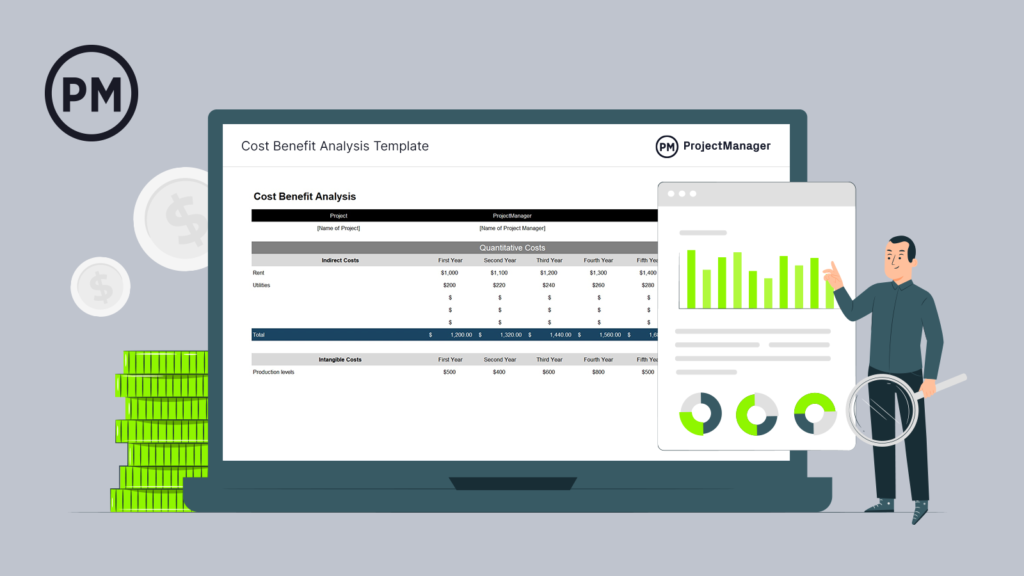
Cost Benefit Analysis
A Construction Cost-Benefit Analysis (CBA) is a systematic approach used to evaluate the financial feasibility and economic impact of a construction project. It helps stakeholders understand whether the benefits of a project outweigh the costs and if the project is worth pursuing. Here’s a detailed guide to conducting a Construction Cost-Benefit Analysis:
1. Define the Scope of the Analysis
- Project Description: Clearly outline the project’s objectives, scope, and key features. This includes understanding what the project aims to achieve and its expected outcomes.
- Time Frame: Determine the time period over which costs and benefits will be evaluated. This includes the construction phase and the operational lifespan of the project.
2. Identify and Quantify Costs
- Direct Costs:
- Construction Costs: Include expenses for labor, materials, equipment, subcontractors, and overheads.
- Design and Engineering: Costs related to architectural and engineering services.
- Permits and Fees: Expenses for permits, inspections, and other regulatory requirements.
- Indirect Costs:
- Financing Costs: Interest on loans, financing fees, and other costs associated with funding the project.
- Insurance: Costs for construction and liability insurance.
- Operational Costs: Future maintenance, management, and utility costs.
- Opportunity Costs:
- Alternative Investments: The value of potential returns from alternative investments that are foregone due to committing resources to this project.
- Contingency Costs:
- Unexpected Expenses: Set aside a percentage of the budget for unforeseen issues or changes during construction.
3. Identify and Quantify Benefits
- Direct Benefits:
- Revenue Generation: Income from leasing, selling, or using the property.
- Cost Savings: Reduction in operational costs due to improved efficiency, energy savings, or other efficiencies.
- Indirect Benefits:
- Economic Development: Positive impact on local economy, job creation, and community development.
- Increased Property Values: Potential appreciation in value of surrounding properties or the project itself.
- Intangible Benefits:
- Quality of Life: Enhanced living conditions, better amenities, or improved work environment.
- Environmental Impact: Benefits from sustainability features, such as reduced carbon footprint or improved environmental quality.
4. Monetary Valuation
- Cost Valuation: Assign monetary values to all identified costs, including both one-time and recurring expenses.
- Benefit Valuation: Assign monetary values to all identified benefits, estimating potential revenue, savings, and economic impact.

5. Conduct the Analysis
- Calculate Net Present Value (NPV):
- Discounted Cash Flows: Use a discount rate to calculate the present value of future costs and benefits.
- NPV Formula: NPV = (Sum of Present Value of Benefits) – (Sum of Present Value of Costs).
- Calculate Benefit-Cost Ratio (BCR):
- BCR Formula: BCR = (Total Present Value of Benefits) / (Total Present Value of Costs).
- Interpretation: A ratio greater than 1 indicates that benefits outweigh costs.
- Calculate Internal Rate of Return (IRR):
- IRR: The discount rate at which the NPV of the project equals zero. It reflects the project’s profitability.
- Comparison: Compare the IRR with the required rate of return or cost of capital.
- Sensitivity Analysis:
- Variable Testing: Test how changes in key variables (e.g., construction costs, revenue projections) affect the outcomes.
- Risk Assessment: Identify how sensitive the results are to uncertainties and risks.
6. Review and Interpret Results
- Feasibility Assessment: Determine whether the project is financially feasible based on the CBA results. Consider both quantitative and qualitative factors.
- Decision-Making: Use the results to make informed decisions about whether to proceed with, modify, or abandon the project.
- Stakeholder Communication: Present the findings to stakeholders, clearly explaining the cost-benefit ratios, financial implications, and overall project value.
7. Documentation and Reporting
- Comprehensive Report: Prepare a detailed report summarizing the cost and benefit analysis, including methodologies, assumptions, calculations, and conclusions.
- Supporting Documents: Include appendices with detailed calculations, assumptions, and data sources.
8. Follow-Up
- Implementation Monitoring: After project approval and implementation, monitor actual costs and benefits to ensure they align with projections.
- Reevaluation: Periodically reassess the project’s performance to ensure it continues to meet the expected benefits and financial goals.

Conducting a thorough Cost-Benefit Analysis helps ensure that construction projects are financially viable, strategically sound, and aligned with overall business or community objectives.
© 2024 All Rights Reserved.


